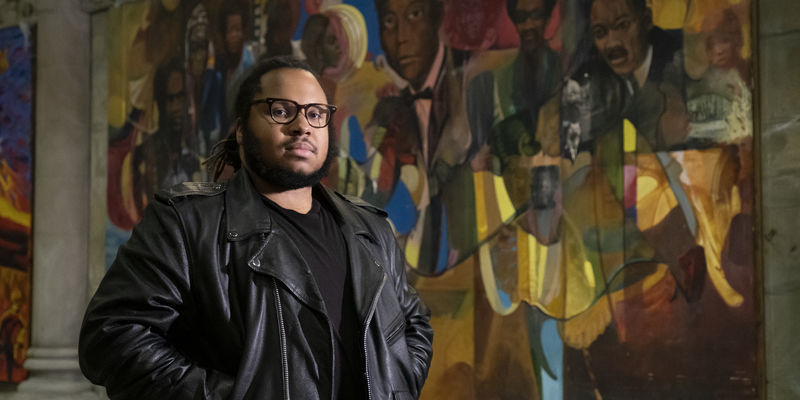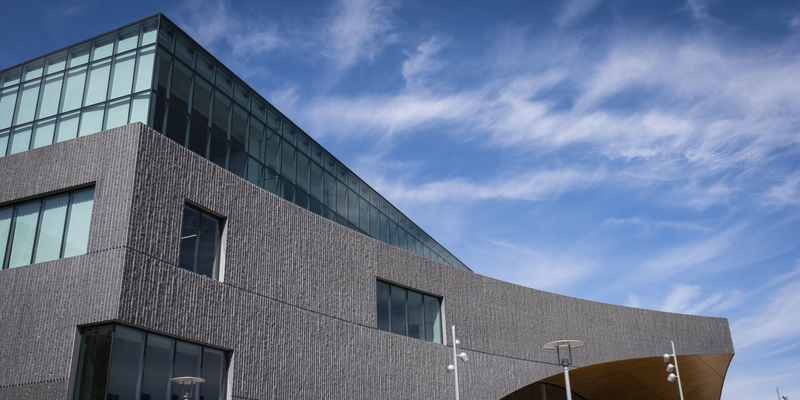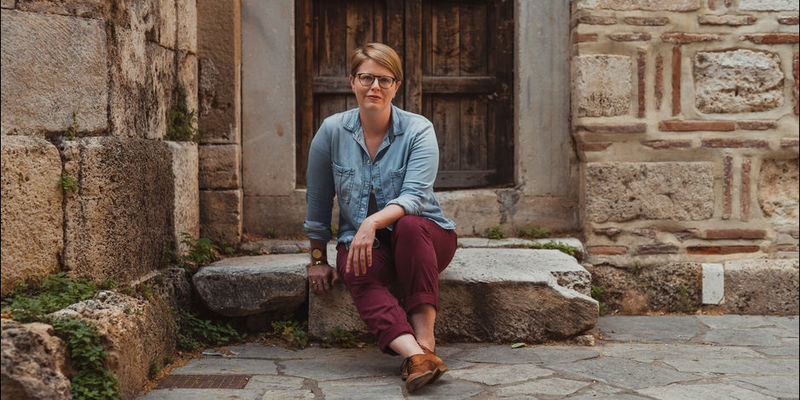Karyn Olivier reveals Black history through her art
The professor of sculpture at Tyler School of Art and Architecture was recently selected to install two memorials recognizing Black Philadelphia history.
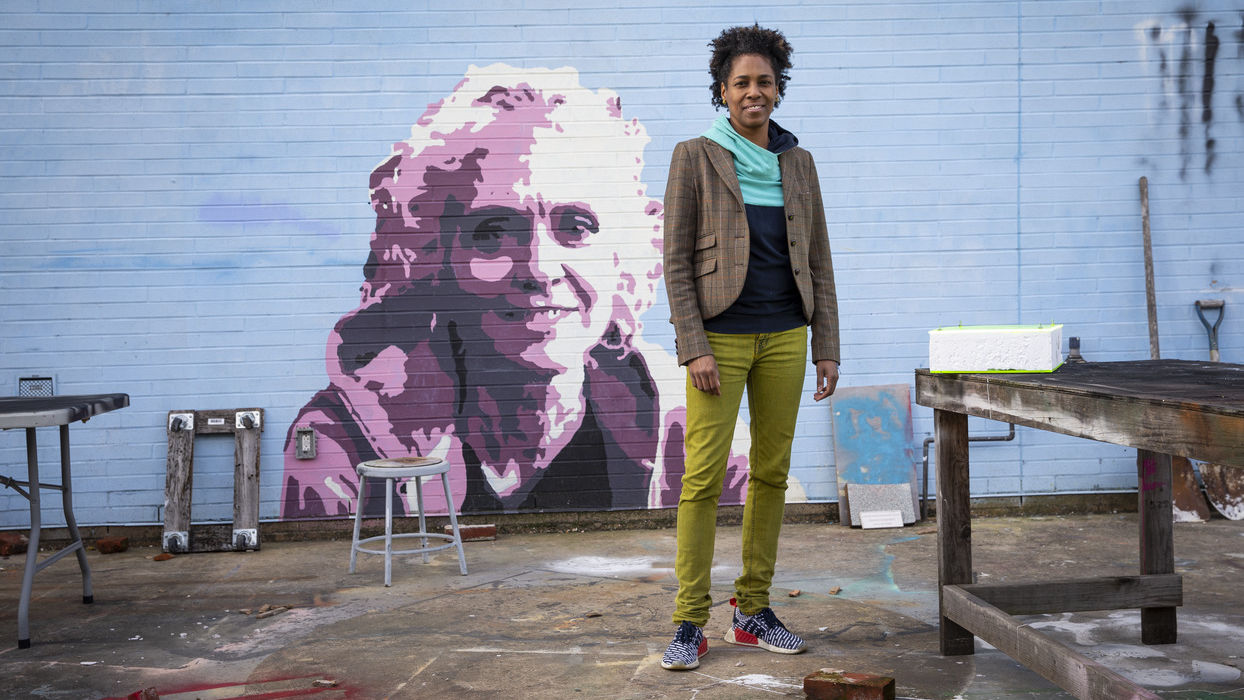
Karyn Olivier’s life and career have been marked by departures. Her family left Trinidad and Tobago for a new life in America when she was a child. Then at the age of 30, Olivier left her career in business to pursue one in art.
The pursuit eventually led her to Philadelphia, where she took classes at Tyler School of Art and Architecture and University of the Arts. “Philadelphia is the place where I became an artist,” she told The Philadelphia Inquirer last year.
Now, Olivier’s work explores departures from history’s perceived narratives and truths.
The professor of sculpture at Tyler was recently selected to install two memorials in the city. One commemorates Dinah, a former enslaved woman whose quick thinking saved the historic Stenton House in Germantown, and the other, the Bethel Burying Ground Historic Memorial, honors the thousands of 19th century Black Philadelphians buried beneath Weccacoe Playground in Queen Village.
We spoke with Olivier about her art career, and how it has been influenced by her identity as an immigrant, gay and Black woman. Olivier also discussed her vision for the Bethel memorial, which includes plans for living elements such as water activated pavers and cradle grave flower planters.
Temple Now: What are some recurring themes or inspirations in your work?
Karyn Olivier: In my work I examine histories, memories, sites, objects and varying publics. I attempt to intersect and collapse these histories with the present. From a young age I recognized that identity is shifting and mutable. Yes, I’m Black. Yes, I'm a woman. Yes, I’m gay. But I’m also an immigrant. I’m also an American. I’m also an artist.
But I also think because my background wasn’t in art, I really start with what’s there—presumed knowns and assumptions. I always start with what’s familiar. I was never an artist who had, in childhood, this fantastical imagination to create from, so instead I think of ways I can extract or rework things we encounter in our everyday lives, to imagine other ways they could exist. I am fascinated by history. I think about the fragmented manner in which we learn about the past. The present day is grounded in these innumerable and shifting histories. My work attempts to fill in or reimagine the gaps.
TN: What impact has race and racism had on your work?
KO: My blackness in a sense is embedded in the work. One of the reasons I am interested in monuments and memorials is because there is a lot of space to reimagine what they are, how they function, and what they can become. Can we make them sites for gathering where we imbue them with power, and not the other way around?
I’ll give you a few examples. I cloaked the Battle of Germantown memorial in Vernon Park, which honors a George Washington-led Revolutionary War battle, with a mirrored surface for a piece titled “The Battle Is Joined.” I don’t think I would have made the same decisions or created that piece if it existed in Rittenhouse Square, which is a predominantly white, upper middle class neighborhood. At the far corner of Vernon Park is the Pastorius Monument. Everyone should know the name Francis Daniel Pastorius. We all know George Washington’s, but don’t know Pastorius, who was an important figure in Philadelphia best known for drafting the first Quaker protest against slavery in 1688. The mirror surface created a mirrored monument. No longer was this monument static and impenetrable; it was now active, alive and constantly shifting. I thought, what would it mean for my Black Germantown neighbors to see themselves reflected in the monument? What does it mean to “become” the monument?
At Stenton House in the Nicetown section of Philadlephia I am fabricating a memorial to honor Dinah, a former slave and servant at Stenton House who is credited with saving that mansion from being burned to the ground by British soldiers during the Revolutionary War. When considering the design of this memorial, I thought about who visits the site—often school groups, historians and folks from the neighborhood. I decided to create a circular stone seating area with two large stone tablets containing questions that we can “ask” Dinah, and similar questions Dinah can ask us, her visitors. What does it mean to have an ongoing dialogue between shifting authors and multiple histories? What happens when we acknowledge our presence in the artwork? Our participation becomes critical to the art; our engagement is in fact creating the work. I hope for there to be acknowledgement of our agency, in our role in keeping Dinah’s memory and this memorial alive. And our responsibility. What could this elicit for a Black kid who asks an ancestor who was once a slave, “What did freedom feel like?” Or when Dinah questions that youth, who is in a neighborhood that suffers from high poverty rates, “Do you feel free?”
TN: What about the historic Bethel Burying Ground moved you and inspired you to want to be involved in designing its memorial?
KO: A lot of things. I was excited about the histories. I was excited that the site has multiple purposes—it’s both a playground and a cemetery. They seem so disparate, but I kept thinking about where they overlap. They’re both sites of discovery, sites of empathy, of celebration, of care, of social engagement, of the unexpected, of disappointment, of anger and loss. They can be sites of alienation and hyper-presentness. To me, they’re both sites where you are very much aware of your aliveness.
TN: There are a few “living” aspects you have planned for the Bethel memorial. Why is it important for the memorial to be a living thing that the community can interact with?
KO: I spent a lot of time hanging out there and seeing how it was used by the Queen Village community. I was interested in how I could make a memorial that is temporal and shifting. I am interested in the unexpected alliances that could happen if someone looks down at a paver and the historic date coincides with that actual day. What could this sort of accidental synchronicity—between the history and the present, an historic figure and a living one—point to or make us consider? Maybe it could allow for empathy, or a consideration of the future, and our own mortality.
TN: You’ve been commissioned to install work all around the world, but is there a special significance in being selected to install memorials in your home city?
KO: Oh yeah. I mean, I love opportunities to make work around the country and the world, but being able to make work where I live, in a place that’s now home, it’s the dream. Philadelphia at one point was the capital of the country. I’m in a place that has such known historic importance, but I’m also allowed to dig deeper and reveal these histories that aren’t necessarily remembered and honored as our common history, our American history. Yet.
It’s an awesome and daunting responsibility. My work will never satisfy everyone, but I do want it to be as complex, as nuanced and as open as possible, while still being as pointed and specific as it can. Bethel was tough because there were a lot of constituents who were invested in this park and cemetery. You had people who, once the cemetery was discovered, wanted the playground to be dismantled. Other folks in the community said, “No, we need to share this space.” It was daunting, but when I started to formulate an idea, I decided to just focus. Who lives/lived here? Who traverses/traversed this site? What can be offered? Specificity allows each of these projects to work, because I’m so tied to what is here, what was here.
Olivier expects the Dinah Memorial at Stenton to be completed this summer, and the Bethel Burying Ground Historic Memorial to be completed by summer 2023. Visit her website to see more of her work.
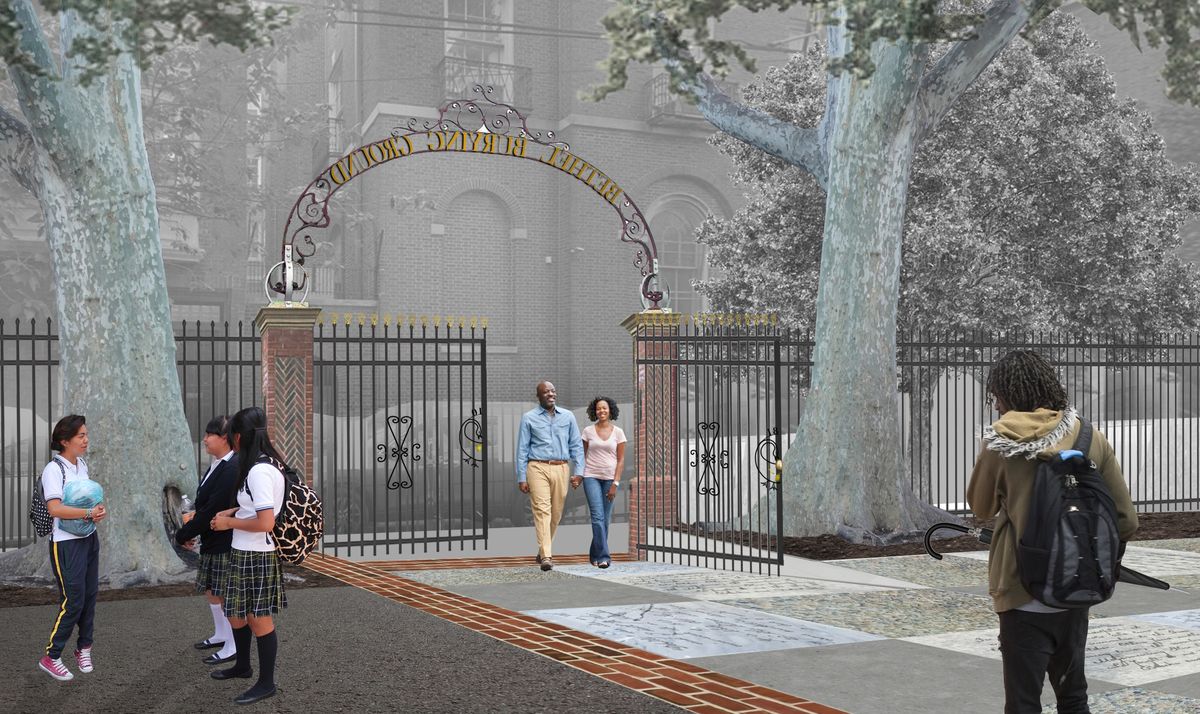
Olivier’s design for the Bethel Burying Ground Historic Memorial, called “Her Luxuriant Soil,” includes water pavers that, when wet, will reveal text containing information about the lives of the Black Philadelphians buried beneath the park. This rendering also shows the proposed new cemetery entrance gate, which she designed to be accurate to the time period of the burials. (Photo courtesy of Karyn Olivier)
